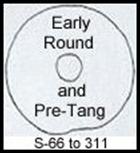
|
Early Round S- 66 - 311 |
|
It is generally accepted that the Chinese use of currency began approximately at the same time as the other coin producing civilizations of the Mesopotamian and Indus peoples (see Minting Methods of Early Coinage). The Chinese preferred method was casting and required a time of improvements. Early manufacture of coins was in its primitive stages and development. Standards of design and manufacture were not universally established until the Tang Dynasty around 618 A.D. |
|
Character placement was not uniform, though usually a single character coin had the placement to the right of the hole. A two character coin would usually have the first character to the right of the hole and the second to the left, but many coins are met with that have this order reversed or the characters aligned top to bottom. Differing here from multiple character coins (3+) to those with an additional mark or number added to a normally two character coin; those with multiple characters would be placed around the coin, whereas placement for the two primary characters would be usually right and left of hole and the additional character placed in either of the remaining locations of above or below the hole. Eventually the reverses of coins came into play. As mold techniques advanced and alignment was understood, secondary characters were more frequently found on the reverse, such as dates, minting numbers, mint names, or an auspicious character. Noteworthy about Chinese Dynastic cast coins, there is almost a total absence of images. The practice of stringing the coins for ease of every day handling for exchange was the norm. The same size cash coin would be strung together. Some say 100 coins, others 200 coins, others 1000 cash in value would be on a cord. Coins from any previous dynasty of the same size would be found on these strings, thus ancient coins would be mixed in with new issues. Schjoth would send his house servants down to the market to exchange his “foreign” money for strings of cash that he would then cut apart and find specimens from many dynasties together. This is how he began his collection while in service for Norway as a customs officer at his various stations of office. |
|
The Three Kingdoms Western & Eastern Chin Division into North & South Sui Dynasty Wu-shu Varieties |
|
S- 181 - 207 S- 208 - 214 S- 215 - 252 S- 253 - 256 S- 257 - 311 |
|
Chou Dynasty (pre-255 BC) S- 66 - 78 |
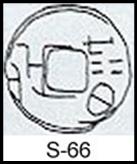
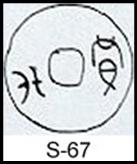

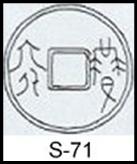
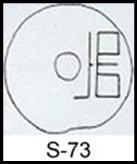

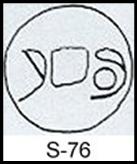
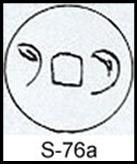
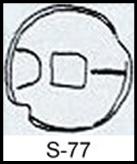
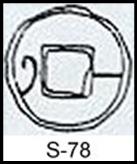
|
S-68-69 Pao ssu huo “valuable four currency”. Worth four Pao huos. Four written with four lines. S-69 slight stroke variation. 29.5mm |
|
S-73-74 Yuan as seen on S-36-7 from Hsiang-yuan, ancient city in State of Wei (Northern Honan). Note large spur break. Round hole. S-74 slight stroke variation. 41mm |
|
S-76 Ming tao meaning Ming knife, from city of Ming. Concurrent with Ming knives (same character but without center dot in circle) (See S-51) 26.5mm |
|
S-77 Yi tao “one knife” equivalent value. Small frail coin. As a currency devalued the metal weight assigned coinage became less. 20.5mm |
|
S-78 Same as preceding. Smaller size.
18.5mm |
|
S-76a Same as preceding. Ming character missing circle and center dot looking more like Tao tao.
26.5mm |
|
S-75 Kung present day city of Chi-chun (Honan). Note large spur break. Round hole. Coin also known for sharp edges. Specimen image reverse has unusual encrustation of S-73 character showing the two issues were concurrent. 44.5mm |
|
S-70-72 Pao liu huo “valuable six currency”. S-70 slight stroke variation. S-72 without Pao. (See “Beginnings “ & “Pao” for ancient character development). 35mm |
|
S-67 Pao huo, different style of writing. A heavier coin, without rims. Pao more common rendering.
24mm |
|
Ch’in Dynasty (255 BC - 206 BC S- 79 - 84a |

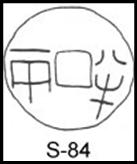
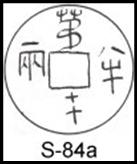
|
The Chou Dynasty was over thrown by the House of Ch’in. The “First Emperor” Shih Huang-di commenced many reforms and established many standards. He began a massive national road system to unify all known China. Setting the axle width for all horse drawn carts helped standard road widths. He added to the building of the Great Wall to keep out marauding steppe peoples. Shih Huang-di established Legalism as the political philosophy of China. He burnt many ancient books of Confucianism and killed scholars who did not comply with his commands. Though Shih Huang-di had a heavy hand it was the first time that the Chinese were under a unified ruler-ship. Westerners derive the name China from this Dynasty. The coin produced by this dynasty was the pan liang, “half liang” (1 shu = 1 grain, 24 shu = liang, pan liang = 1/2 liang = 12 shu). A larger coin by diameter may be thinner and a smaller coin thus fatter. During this reign the coins maintained a good standard and were well made. |
|
Not all pan liangs found in Schjoth will be shown here. There are minor but notable differences that more scholarly numismatics will make. Each time a mold would be broken and the next would be hand crafted again as mother and seed coins were not yet known. Shown at left are two typical differing pan liangs in their character rendering. Sizes typically varied from 28 to 38mm. Weight was consistent, typical of Ch’in pan liangs. To the right is a rarity in Schjoth’s collection. The script would read top to bottom, right to left as ti shih shih pan liang, or “series twenty pan liang”. |
|
Western Han Dynasty (206 BC - 25 AD) S- 85 - 115 |

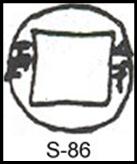
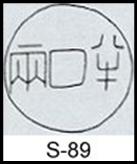



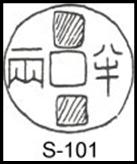
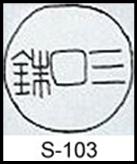
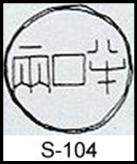
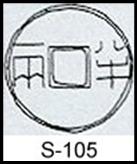
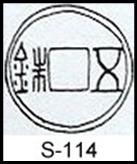
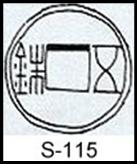
|
S-85 Pan liang Emperor Kao Tsu (206-195 BC) permission given to cast small coinage, Ch’in coinage was heavy and inconvenient. 20mm. S-86-7 Pan liang elm-leaves, coinage became very thin and small. 15-10mm 0.5 to 0.7 grams weight
|
|
S-92-99 (shown are the most commonly met types) Emperor Hsiao Wen (179-157 BC) Allowed the casting of smaller 4 shu pan liangs.
S-95 is a typical “finishing” error where a securing rod forced through the center but not aligned square to the hole would create a rosette hole.
S-96 is the oddity where the two characters are reversed, and thus have earned the name liang-pan.
S-99 is also such an oddity and is correctly named pan-pan.
Average 4 shu 24-26 mm, 2.5-4 gm.
|
|
S-88-91 Empress Lü Zhi aka Kao (187-180 BC) Liking neither the light elm-leaves nor the heavy 12 shu Ch’in pan liangs, she adopted the “8 shu currency”.
Average: 32mm, 7.5 gm |
|
The Han Dynasty ruled over China for 400 years in two periods interrupted by the usurper Wang Mang (7-22 AD). |
|
366 |
|
S-101 A reported story for this pan-liang is that a wealthy nobel man was allowed to cast his own coins and thus made two types, with one block and with two blocks. |
|
S-103 San-shu “three-grains” Emperor Wu In the first year of Emperor Wu’s reign the san-shu was circulated as the pan-liangs of the 4 shu weight were being illicitly filed. The weight is according to the legend. Average 23.6 mm, 2.4 gm. |